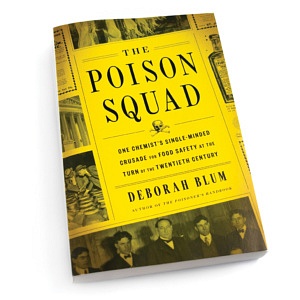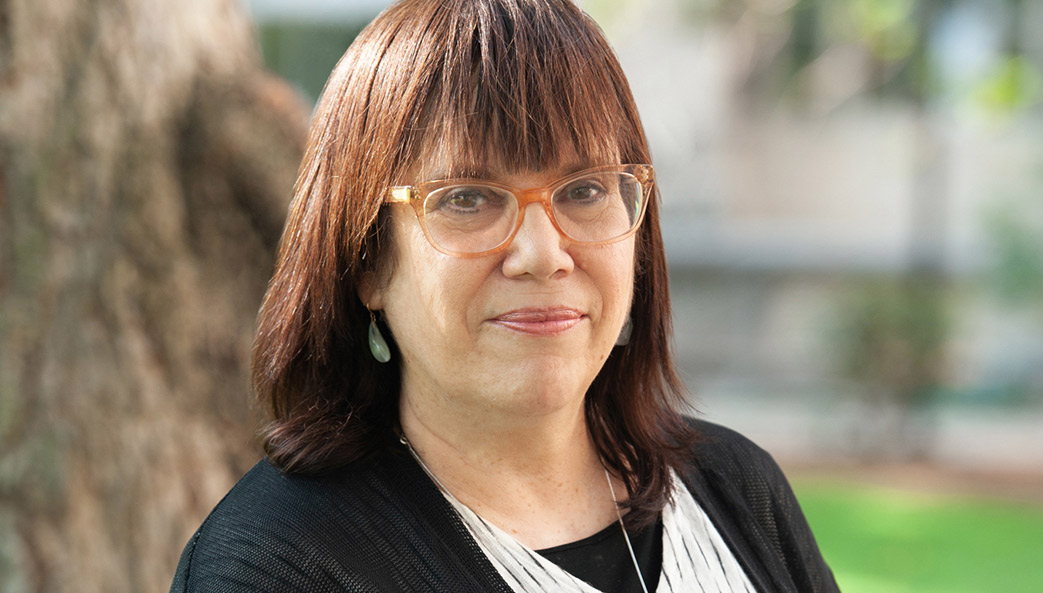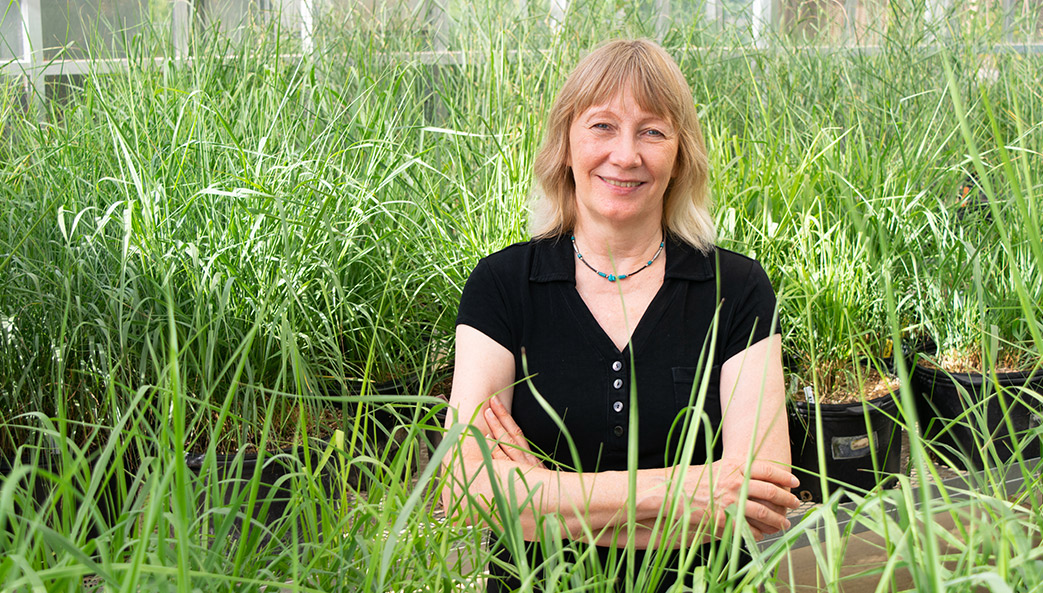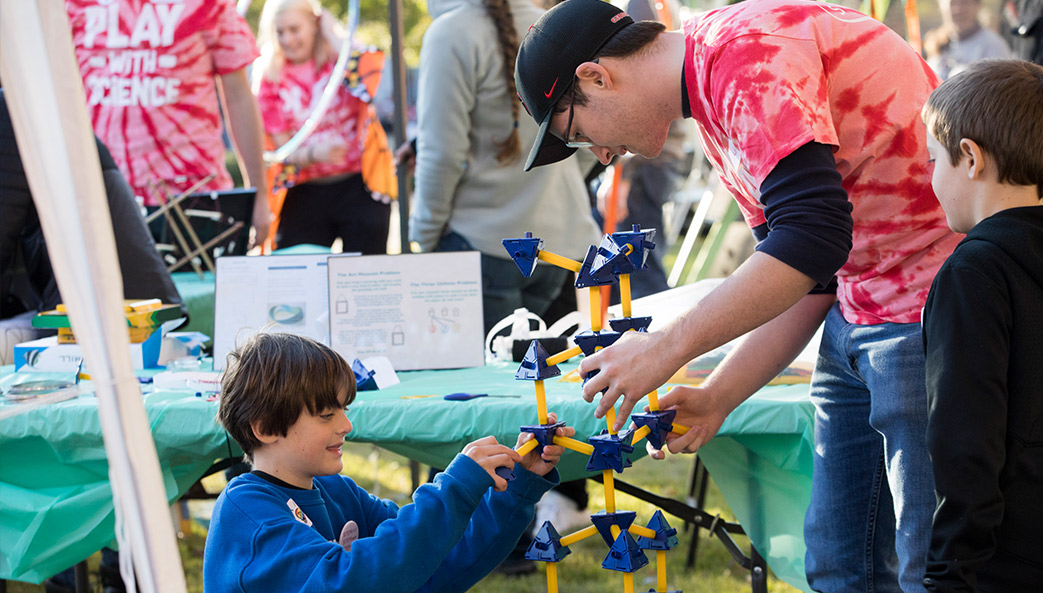Deborah Blum hasn’t served her husband a cup of coffee in years. It’s not for lack of trying. She offers, but he always replies, “No thanks.” It’s become something of a running joke between the two, and there’s a good reason why.
It’s because Blum knows entirely too much about poisoning people.
The longtime journalist has written half a dozen books including The Poisoner’s Handbook, a New York Times bestseller. Her latest is The Poison Squad, published in September, an exploration of the history of food safety told through the story of Dr. Harvey Washington Wiley, who campaigned for consumer protections against American food corporations. Wiley’s investigations into food and drink fraud, conducted at the turn of the 20th century, included feeding commonly used additives to a group of young men to determine their effects. A Washington Post reporter dubbed the test subjects the Poison Squad.
 Wiley’s methods were “out there,” says Blum, director of the Knight Science Journalism Program at MIT. “We would never experiment on humans the way he did.”
Wiley’s methods were “out there,” says Blum, director of the Knight Science Journalism Program at MIT. “We would never experiment on humans the way he did.”
In June, the 1976 graduate of the Grady College of Journalism and Mass Communication returned to campus to lead a science writers workshop. Over lunch at Bolton Dining Commons, she discussed her new book, why caveat emptor still applies, and the importance of communicating about science—something she’s been doing for more than 30 years.
“I find science endlessly fascinating—human, ethically complicated—and I love telling stories about it in that way,” Blum says. “And it’s both in a global sense and in our everyday lives, right down to knowing whether that cup of coffee or bowl of cereal is safe or not.”
Blum’s first reporting jobs involved covering police and fires, courts, city government, and education in Gainesville and Macon, Georgia, and St. Petersburg, Florida. But she had always been drawn to science. As a child, she and her three sisters collected butterflies, and her family followed her entomologist father on bug-collecting expeditions to Puerto Rico, England and Canada, where she helped by flying helium-filled balloons that carried chemicals designed to attract male bees. At Florida State University, Blum planned to major in chemistry until an unfortunate meeting of Bunsen burner and braid made her realize she might not quite have a great future as a lab scientist.
After two years in Florida, Blum quit her reporting job and enrolled in graduate school at the University of Wisconsin-Madison, studying the history of science while learning how to write about science. After graduating, she joined The Fresno Bee and then The Sacramento Bee, both in California. Her best-known work was a series on ethical issues in primate research that won the 1992 Pulitzer Prize for beat reporting and became the basis for her first book, The Monkey Wars, published in 1995.
After 13 years in Sacramento, Blum returned to the University of Wisconsin as a journalism professor, where she continued to write for publications including The New York Times, The Wall Street Journal, Time, Scientific American and Nature.
She also wrote more books, exploring gender studies (Sex on the Brain, 1998), the science of affection (Love at Goon Park, 2002) and 19th-century scientists in pursuit of the afterlife (Ghost Hunters, 2007). The Poisoner’s Handbook, published in 2010, told the story of scientists who hunted poison-wielding killers in Jazz Age New York City and pioneered the field of forensic science.
In 2015 she joined the Knight Program at the Massachusetts Institute of Technology, where she launched Undark, a digital magazine that explores the same territory as her books—the intersection of science and society. Undark is named after a radium-based luminous paint used in watch and clock dials during the early 20th century. It proved to be toxic and sometimes deadly for the workers who used it, but exposure to such substances was common in the early days of industrial chemistry.
As Blum explains in her new book, before Wiley assembled his Poison Squad, consumers couldn’t be sure what was in their food. Formaldehyde was used to embalm corpses and also to preserve milk and meat. Copper sulfate, a toxic metallic salt, was added to canned vegetables to make them greener. Borax, best known as a cleaning product, was used to make rancid butter edible.
Conditions improved greatly after the Food and Drug Act was passed in 1906, but a hundred years later, Blum—a “big label reader”—still sees room for improvement.
“We know so much more and can measure so much better now,” she says, “but our regulations for food safety testing have not been updated as much as I could wish to be even more consumer-first.”
Like her previous books, The Poison Squad is written for the public, not an academic audience. That’s a deliberate choice.
“I want to lure back the audience that slipped away from science in high school because they thought science was boring, or a teacher made them think they weren’t smart enough,” she says. “I want to show them that’s not true.”
Consumers need to have a basic understanding of science because it affects our daily lives, according to Blum.
“Science communication matters because our world is shaped by technology,” she says. “Common-sense tools are essential to navigating the world we live in today and making good decisions for ourselves, our families, our communities and the world around us.”






